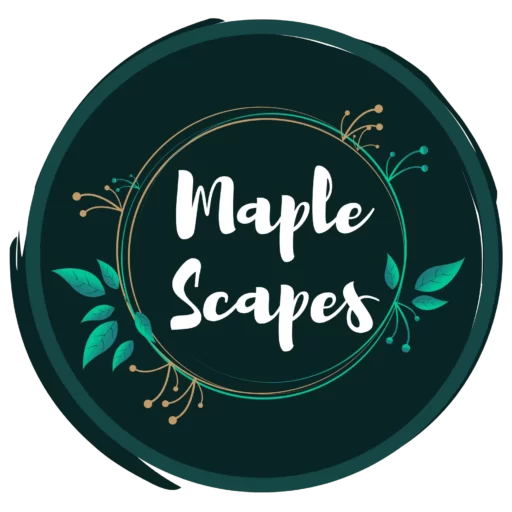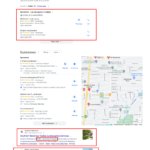Flower bed edging is a fundamental landscaping technique that enhances the aesthetic appeal of gardens and serves practical purposes.
Flower bed edging is a technique used in gardens, parks, and residential landscapes to create defined borders around planting areas.
These borders add a neat and organized look to the outdoor space, help contain plants, prevent soil erosion, and clearly distinguish between different garden elements.
The edging materials vary widely, from natural elements like stones, bricks, and wood to synthetic options like metal and plastic. Each material imparts a unique style and character to the garden, allowing homeowners to customize their landscapes to match their preferences.
Moreover, flower bed edging provides opportunities for creative designs, as various patterns, colors, and shapes can be incorporated to complement the overall theme of the garden.
Whether you’re a seasoned gardener or just beginning to explore landscaping, understanding the importance of flower bed edging can contribute significantly to the beauty and functionality of your outdoor haven.
What is Flower Bed Edging?
Flower bed edging is a creative landscaping technique that involves defining the borders of your garden beds using various materials. It serves functional and aesthetic purposes, offering a polished look while containing the soil and mulch within the designated planting area.
Functionally, flower bed edging prevents grass, weeds, and other unwanted vegetation from spreading into the garden beds. This demarcation also helps retain moisture in the soil and prevents erosion, contributing to healthier plant growth.
Additionally, it helps maintain a clear separation between the lawn and the garden, making lawn maintenance easier.
Aesthetically, flower bed edging adds an eye-catching element to your landscape design. It offers an opportunity to showcase your creativity by choosing from materials such as bricks, stones, metal, wood, plastic, or even plants, like low-growing herbs.
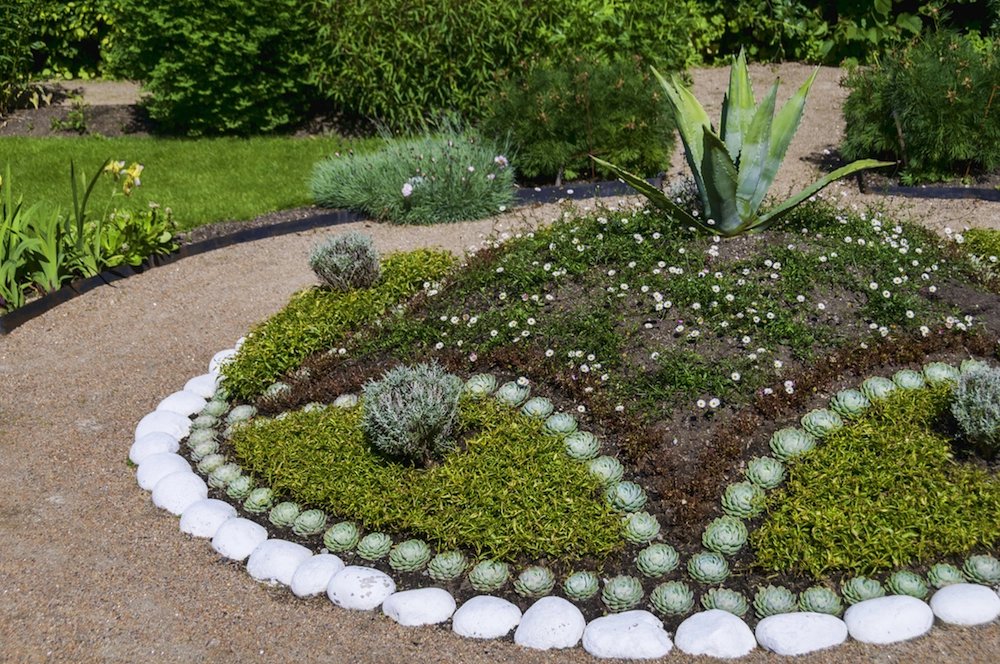
Each material brings a unique visual appeal, ranging from rustic and natural to modern and sleek. The edging material can complement the overall style of your garden and home architecture, enhancing the overall curb appeal.
Installing flower bed edging is a relatively straightforward process involving digging a shallow trench along the bed’s perimeter and placing the chosen material securely.
Proper installation ensures longevity and durability, allowing you to enjoy the benefits for years.
Equipment required for Flower Bed Edging
Specific equipment is essential to achieve clean lines and prevent encroachment of grass or weeds. Here’s a look at the equipment required for flower bed edging:
1. Spade or Edging Tool: A spade or specialized edging tool is fundamental for cutting the boundary between the flower bed and the lawn. Depending on the edging you want to achieve, choose a flat-edged, half-moon, or serrated tool.
2. Garden Hose or Rope: Before edging, it’s crucial to outline the desired shape of the flower bed. A garden hose or a length of rope can be used to lay out the curves or straight lines that define the edges.
3. Mulch or Gravel: Once the edging is complete, adding a layer of mulch or gravel can help maintain a clean look while providing additional weed suppression.
Always follow safety guidelines while using tools and equipment, and take your time to create precise and attractive flower bed edging.
Materials Required for Flower Bed Edging
Creating a beautiful flower bed involves more than selecting the right plants; it also requires careful consideration of the edging materials.
The materials can significantly influence your garden’s overall look. Here’s a rundown of some popular materials and their considerations.
1. Bricks: Bricks provide a classic, timeless look that works well in formal and informal garden settings.
They are durable, weather-resistant, and can be arranged in various patterns.
To use bricks for edging, you’ll need the bricks themselves, sand for leveling, and mortar to secure them in place.

2. Stones: Natural stone edging makes your flower beds rustic and organic.
Depending on your preference, you can use larger stones for a more rugged look or smaller, uniformly cut stones for a neater appearance.
Stone edging often requires digging a trench for proper placement.

3. Wood: Wooden edging offers a warm and natural look. You can choose from various types of wood, such as treated lumber or cedar, which is naturally resistant to decay.
Wooden edging materials include stakes, boards, or logs.
Remember that wood may require more maintenance than other materials to prevent rot.

4. Plastic or Rubber: Plastic or rubber edging is cost-effective in various colors and styles.
It’s easy to install, as these materials are often flexible and can be bent to follow curves.
However, they might not be as durable as other options and could fade or become brittle due to sun exposure.

When selecting materials for flower bed edging, consider the following factors:
Aesthetic: Choose a material that complements the style of your garden and the surrounding landscape. Consider color, texture, and overall appearance.
Durability: Some materials may be more suitable depending on your climate and weather conditions. Materials resistant to moisture and temperature fluctuations are ideal.
Installation: Some materials are easier to install than others. Consider your DIY skills and the time you’re willing to invest in the project.
Maintenance: Different materials require different levels of maintenance. Consider how much effort you’re willing to put into upkeep.
Budget: The cost of materials can vary significantly. Set a budget and explore options that fit within it.
In conclusion, the materials you choose for flower bed edging enhance your garden’s overall beauty and functionality.
Consider your preferences, the style of your garden, and the practical aspects when making your decision. With the right materials, your flower bed will have a polished and finished look that enhances the overall appeal of your outdoor space.
Flower Bed Edging (How to do it yourself)
Here’s a detailed step-by-step guide on how to create flower bed edging by yourself:
Materials Needed:
- Garden spade/edging tool
- String or garden hose
- Wooden stakes
- Rubber mallet
- Landscape fabric (optional)
- Mulch or gravel (optional)
- Plants or flowers
- Soil
Steps:
1. Planning
Decide on the shape and size of your flower bed. Outline the desired shape with a string or garden hose. Mark the outline with wooden stakes hammered into the ground.
2. Clear the Area
Remove any grass, weeds, or debris from within the marked area. Use a garden spade or edging tool to create a clean edge along the marked line.
3. Dig the Trench
Dig a trench along the marked edge using the garden spade or an edging tool. The depth and width of the trench depend on the type of edging you’re using. A typical depth is about 4-6 inches, and the width can vary from a few inches to a foot.
4. Install Landscape Fabric (Optional)
To prevent weed growth, lay down landscape fabric at the bottom of the trench before proceeding. This will help keep the bed tidy and minimize maintenance.
5. Install Edging Material
Place your edging material (stones, bricks, pavers, metal, etc.) into the trench, snug against one another. Use a rubber mallet to gently tap them into place, ensuring they’re level and secure.
6. Backfill the Trench
Fill in the trench with soil, pressing it firmly against the edging material. Make sure the soil is level with the surrounding ground.
7. Add Mulch or Gravel (Optional)
Spread a layer of mulch or gravel inside the flower bed. This adds visual appeal, helps retain moisture, and suppresses weed growth.
8. Plant Flowers or Plants
Now that your flower bed edging is in place, you can plant your desired flowers or plants. Follow spacing guidelines and be sure to water them well after planting.
9. Maintenance
Regularly weed and water your flower bed to keep it looking its best. Edging can help prevent grass from creeping into the bed, but occasional maintenance may still be needed.
Creating flower bed edging is a great way to define and enhance the appearance of your garden. With careful planning and execution, you can achieve a polished and professional look for your landscape.
Top 5 Ideas for Flower Bed Edging
1. Cobblestone Border
Use cobblestones as flower bed edging to create a timeless and rustic look. The stones’ natural texture and irregular shapes add a charming touch to your garden.
They can be arranged in various patterns to complement the surrounding landscape.
Cobblestone edging provides a durable and low-maintenance solution while giving your garden a classic appeal.

2. Metal Garden Edging
Use metal edging to define your flower beds for a modern, sleek aesthetic. Metal strips or panels offer clean lines that separate your plants from the surrounding lawn or pathway.
They come in various finishes, such as galvanized steel or powder-coated options, ensuring durability and visual appeal. Metal edging is perfect for achieving a clean and organized garden design.

3. Wooden Log Edging
Wooden logs are an excellent choice for flower bed borders if you want a more natural and whimsical look.
They can be positioned vertically to create a charming rustic fence around your beds, adding a touch of warmth to your garden.
Wooden logs can be easily sourced and cut to the desired lengths, making them a cost-effective and eco-friendly edging option.
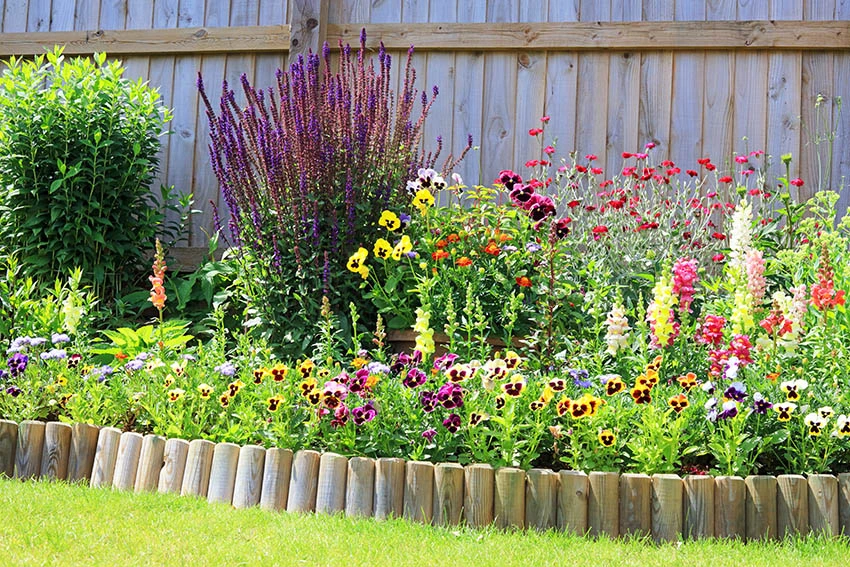
4. Brick or Paver Edging
Bricks or pavers are versatile options that offer your flower beds a neat and organized appearance.
They can be laid horizontally or vertically to create various patterns, allowing you to match the edging with the style of your garden.
Brick or paver edging helps prevent soil erosion and keeps grass from encroaching onto your flower beds, maintaining a tidy and defined landscape.

5. Plants as Edging
Embrace a natural and artistic approach by using low-growing plants as edging for your flower beds.
Plants like dwarf ornamental grasses, creeping thyme, or even ground-covering flowers can soften the edges while seamlessly blending your garden into the surroundings.
This living edging not only adds a splash of color but also contributes to biodiversity, attracting pollinators and enhancing the overall beauty of your outdoor space.
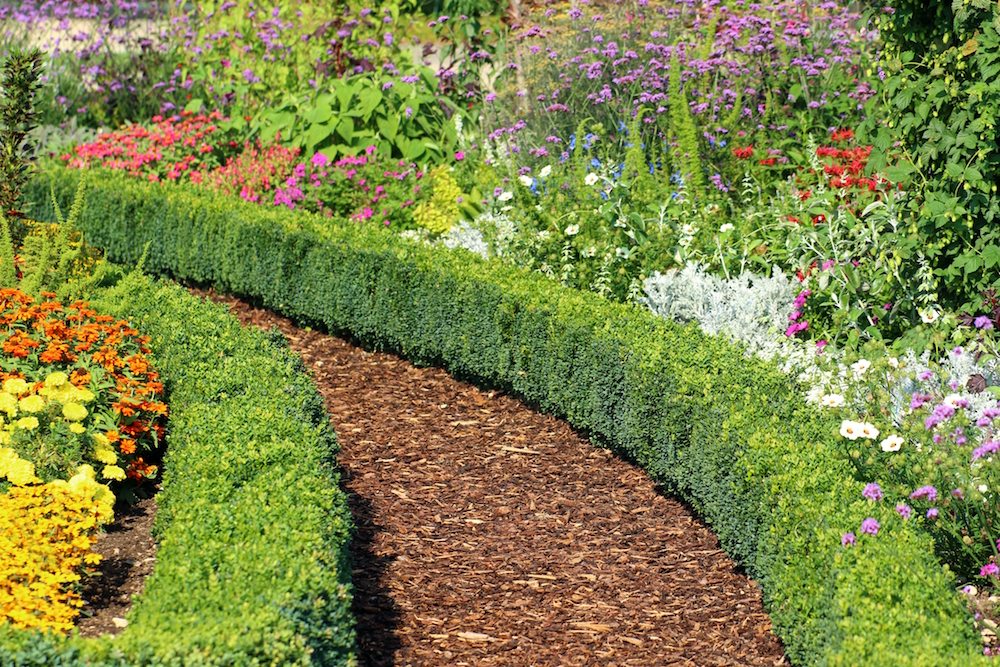
Conclusion
In conclusion, flower bed edging is vital to your garden’s aesthetic and practical aspects. Creating distinct boundaries enhances your outdoor space’s overall organization and structure.
It prevents the spread of weeds and invasive grasses, helping plants thrive without constant resource competition. Moreover, edging offers soil retention benefits, preventing erosion and maintaining the integrity of your garden beds.
Ultimately, flower bed edging is a creative tool that empowers you to shape your garden’s narrative and enhance its overall beauty.
Whether you’re seeking a formal or casual look, a modern or traditional feel, flower bed edging allows you to express your style while enjoying the practical advantages it brings to your outdoor sanctuary.
